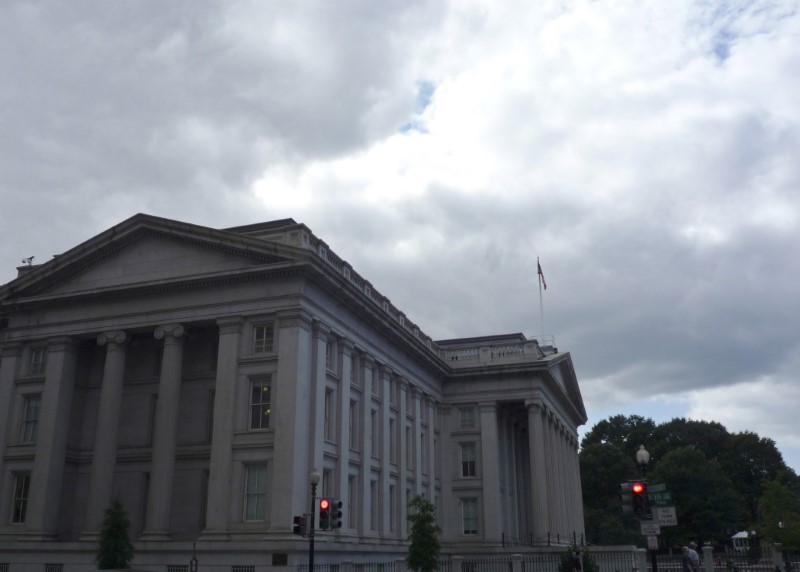By Karen Brettell
(Reuters) - The U.S. Treasury Department’s plan to significantly increase debt issuance in the fourth quarter is likely to make it more costly for banks and asset managers to borrow in the crucial $2.5 trillion repurchase agreement market, which could tighten credit conditions across the economy.
Last month, the Treasury said its debt issuance would swell to $501 billion in the fourth quarter, up from $96 billion in the third quarter. Analysts expect Treasury bills, which have short maturities, to account for the lion’s share of the new debt.
"That is a massive wave of bills hitting the market in a very short window," said Michael Cloherty, head of U.S. interest rate strategy at RBC Capital Markets in New York.
The increase in issuance is likely to tighten bank balance sheets at the same time as they typically contract for year-end, Cloherty said.
Money market funds, the largest lenders in repurchase agreements, otherwise known as repos, are expected to increase purchases of Treasury bills at the expense of making loans in repo, making the loans more expensive.
Repo loans are typically made overnight and are backed by Treasuries as collateral. The repo rate is currently being held relatively low by a reduction in Treasury supply due to the debt ceiling.
The government will need to increase debt sales to replenish its cash levels after being restricted in the third quarter by the debt limit. The Congressional Budget Office has said U.S. lawmakers need to raise the debt ceiling by mid-October to avoid defaulting on debt payments.
Afterwards, "most of the funds raised by the Treasury via upcoming T-bill issuance might not actually be spent, because it plans to increase its cash balance, with the net upshot being a tightening of monetary conditions," analysts at Morgan Stanley (NYSE:MS) said in a report on Thursday.
Banks, hedge funds and real estate investment trusts (REITs) are the largest borrowers in the repo market. Banks use the financing to make loans or buy securities, while hedge funds typically use the funds to make leveraged investments in other asset classes. REITs use the financing to purchase mortgage-backed debt.
While conditions are likely tighten, it is not yet clear whether it will rise to levels that disrupt markets.
TIGHTER FINANCING
Longer-term, repo rates may remain elevated as the Treasury faces rising cash needs from an aging population and as the Federal Reserve is expected to reduce its bond purchases, with financing needs expected to jump in the second half of 2018.
"Supply will certainly move higher and it will likely cause repo to be somewhat higher in the range than it has been," said Mark Cabana, head of short rates strategy at Bank of America Merrill Lynch (NYSE:BAC) in New York.
It may also reduce the amount of U.S. dollars in circulation, making it more difficult for foreign banks to borrow the currency.
As the Federal Reserve pares the size of its balance sheet the amount of reserves that banks hold with the U.S. central bank will decline, if higher rates paid on Treasury bills are deemed more attractive than holding the reserves.
A decline in reserves would mean that fewer dollars are circulating in the market, with foreign banks likely hardest hit, according to Morgan Stanley.
"Non-U.S. banks will generally find it harder to access dollars than their US counterparts, and have indeed tended to bear most of the brunt when excess reserves decline," the Morgan Stanley analysts said.
